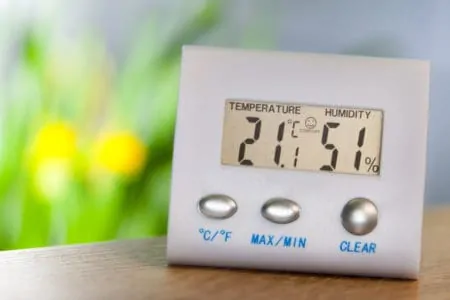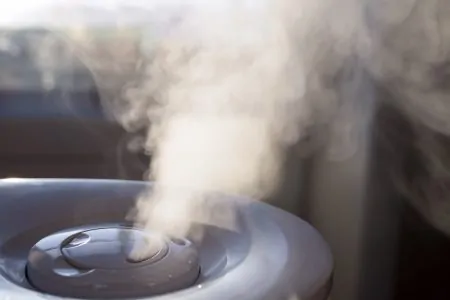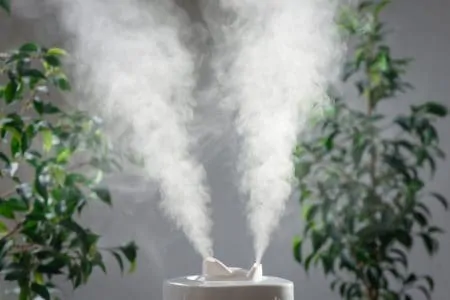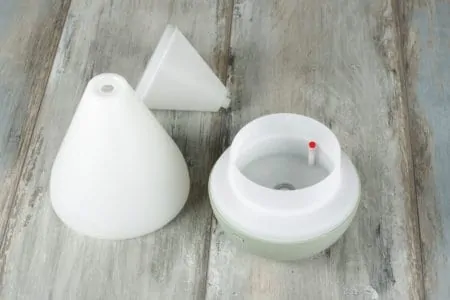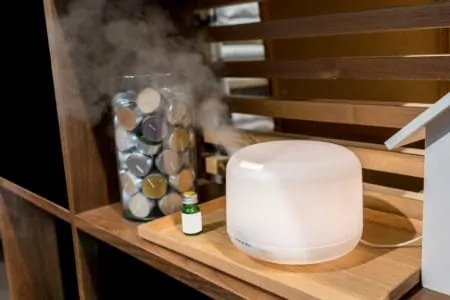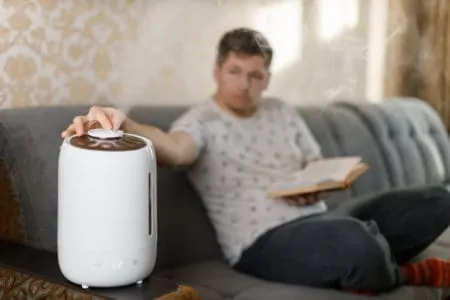The humidity levels in your home are crucial determinants of your overall comfort. High humidity can result in mold and mildew. In contrast, too little humidity will lead to dry skin and potentially damaged furniture.
It’s essential to be aware of the ideal indoor humidity level. That way, you can make appropriate changes to better your comfort.
We’ll walk you through what the optimum humidity levels are and how to gauge them. We’ll also share the best ways to add or remove moisture to get to the best humidity level.
Key Takeaways
- Ideal indoor humidity levels range from 30 to 50 percent, promoting comfort and preventing mold or dryness issues.
- Gauge indoor humidity levels using an ice cube test or a hygrometer for more accurate readings.
- To increase humidity in dry conditions, use a humidifier, air-dry clothes, and place bowls of water or houseplants around the home.
- Lower humidity levels by using a dehumidifier, exhaust fans, air conditioning, and avoiding boiling water indoors.
How to Gauge Indoor Humidity Levels
Unless you have a sixth sense for humidity levels, determining the exact levels will require some testing and, perhaps, a tool. Of course, there are some telltale signs that your indoor humidity is out of whack (1):
- Too much moisture: Early symptoms include fogging or condensation on windows and excessive moisture. A warning sign is mold starting to grow on the walls and ceilings.
- Low humidity: Early signs are usually increased experiences of static electricity. You’re also likely to see dried or cracked paint and millwork in the long run.
There are two main ways to gauge indoor humidity levels:
The Ice Cube Test
The ice cube test won’t give you an exact humidity percentage, but it’s quick and will give you a general idea.
What You Need
- A glass.
- Three ice cubes.
- Water.
What You Do
- Choose a room: Pick a room in your home to test the humidity. You can use any place except for the kitchen and bathroom. These locations won’t give you an accurate idea because they consistently use water.
- Place the ice cubes: Put the three ice cubes into a regular-sized drinking glass.
- Add water: Add enough water to cover the ice cubes and give it a gentle stir.
- Leave the room: After adding the water, leave the room for three to four minutes.
- Check your results: Return to the room when the time is up. If you see droplets on the outside of the glass, the humidity is high. If there is absolutely no condensation, it’s too low, and you should consider a humidifier. However, if there is just a little condensation, your humidity levels might be adequate.
Hygrometer
The ice cube test is suitable to provide a general idea of humidity levels. For accurate results, though, you’ll need a hygrometer.
The hygrometer will measure the water vapor or humidity in the surrounding air. Fortunately, it’s not a pricey investment. You can easily find an analog or digital one for as little as $10.
Use the hygrometer in different rooms in your home to determine the humidity. Some places may have a lower or higher reading than others.
What Are Optimal Humidity Levels?
Ideal indoor humidity should be around 30 to 50 percent (2).
As the weather changes from hot to cold, humidity levels do, too (3). This is often referred to as “seasonal humidity.” It affects your comfort and home, so it’s essential to manage accordingly.
During winter, the air is crisp, bitter, or dry. In the summer, it feels heavier, muggy, and sticky. These are perfect descriptions of humidity levels throughout the year.
Summer
During summer or warm months, the air contains more moisture. The increased moisture takes longer to evaporate, which raises humidity. This is why the air may feel sticky or heavy, which can cause us to sweat more (4).
In summer, you should keep the indoor humidity levels at 30 to 45 percent (5). Avoid having more than 50 percent humidity, which could lead to discomfort and mold.
To prevent an increase in humidity, use your air conditioner to remove excess moisture. You can also turn on the exhaust fans to air out heat.
In addition, if you have a dehumidifier, it can help decrease indoor humidity. Just be careful not to overuse it.
A big don’t during a humid summer day is to use a humidifier. Even if you have a cold or an allergy flare-up, keep it to a minimum of 30 to 50 percent humidity (6).
Winter
Growing up in the cold north, where winters are long and dark, your skin will know firsthand what low humidity means. Apart from boots and jackets, our winter essential was a deep moisturizer. Winter air can be unforgiving to exposed skin — it draws out most of the moisture, leaving a bitter, sharp atmosphere behind.
Therefore, during cold months, restoring moisture to the indoor air is crucial. Try to keep indoor humidity at around 40 percent. If higher, you’ll notice condensation on the windows, indicating that humidity levels are too high and could cause mold.
In the winter, take a portable humidifier from room to room. If applicable, consider investing in a whole-house humidifier.
Another excellent tip is to place houseplants around your home. These can add small amounts of moisture to the air.
One thing we always do when it’s cold is place small water basins near the heating system. You can get small hangable containers to hang on radiators — these work similarly to humidifiers.
Low Indoor Humidity
Problems Associated With Low Indoor Humidity
We tend to worry more about high levels of humidity than low levels, probably due to our fear of mold and mildew. Too little humidity, however, can have adverse effects on overall health as well as our home (7). Let’s break it down:
Low Humidity Effects on Health
Low humidity is sneaky. It can cause a variety of problems to our health since it creates an environment where bacteria and viruses thrive. Some ailments include:
- Dry skin and lips.
- Scratchy throat and nose.
- Increased chance of developing colds.
- Respiratory issues.
- Bloody nose.
- Lung and sinus problems.
- Low body temperature.
Effects of Low Humidity on the Home
Over time, low humidity can also cause issues with the home. These include:
- An increase in static electricity.
- Shrunken, separating, or warping of wood floors and furnishings.
- Wallpaper may peel and loosen.
- Accumulation of mold behind loose wallpaper.
- Overall compromised indoor environment.
How to Increase Humidity
High Indoor Humidity
Problems Associated With High Humidity Levels
High humidity is common during summer, but it can occur in any season or when you overuse a humidifier. It’s essential to watch out for this as it can lead to significant damage to the home.
Effects of High Humidity on Health
Although high humidity can have direct effects on health, the impact it has on the home can also result in ailments:
- Excessive sweating, overheating, and heat stroke.
- Increased occurrences of asthma and allergy flare-ups (10).
High Humidity Effects on the Home
The home is where you’ll see a direct impact of the increased humidity. This includes:
- Excessive condensation on windows.
- Wet spots and stains on ceilings and walls.
- Mold in high-moisture areas, including the bathroom.
- Musty smells.
- Mildew growth.
- House structure may begin to rot.
- Increased chance of pests.
How to Lower Humidity
FAQs
To Humidify or Dehumidify?
The ideal indoor humidity is anywhere between 30 to 50 percent (12). This does differ from summer to winter, so using a hygrometer or other tools to check is essential.
Indoor humidity that is too high or too low can have adverse effects. High levels lead to mold and mildew, whereas low moisture creates a good environment for bacteria and viruses. Both are capable of making us sick.
The best ways to combat low humidity are by running a humidifier where needed, cooking more and air-drying laundry. To avoid high humidity, run a dehumidifier and vent out vapors that result from cooking and showering.
